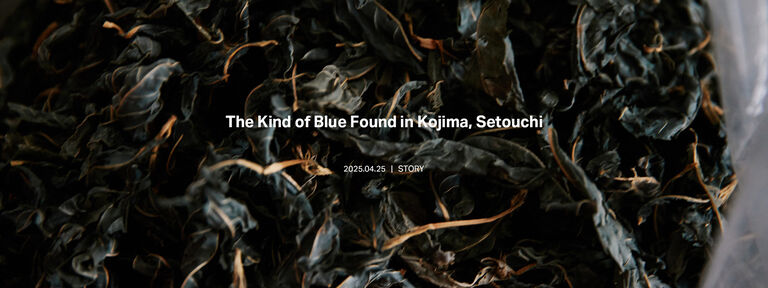
The NATURAL INDIGO category most prominently represents MOMOTARO JEANS’ attitude and determination to pursue unique expressions of blue, led by their signature “特濃-TOKUNO BLUE.” Traditional aizome indigo dyeing has a history spanning well over 1,000 years in Japan. Denim fabric made by hand-weaving yarn dyed with natural indigo leaf extract adds a distinctly Japanese character to what was originally an imported product. However, behind the rich expressions created by artisans and manufacturing sites lie many stories of both joy and sorrow that cannot be told simply as beautiful tales. We speak with Yoshiharu Okamoto, an aizome dyeing artisan who was born and raised in Kojima, Okayama Prefecture, and who is solely responsible for MOMOTARO JEANS’ NATURAL INDIGO series, about the value of aizome dyeing—a story of unknown joys and struggles from a man who has spent half his life in the bottomless world of blue.
Photography: Kousuke Matsuki Editing & text: Rui Konno
Japanese Ai and Indigo: Two Distinct Blues
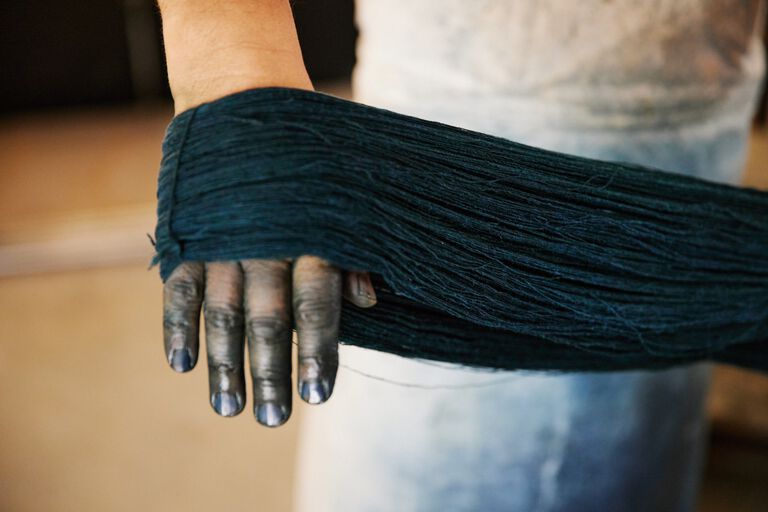
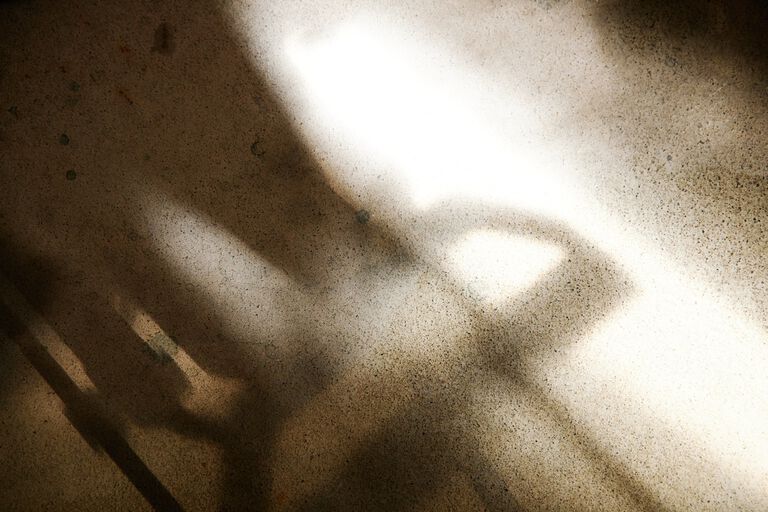
—I’ve been watching your work process for a while, and I noticed that you don’t just soak these yarn bundles, but rotate them as well?
Okamoto: Yes. These yarn bundles are called “kase” in Japanese – if you leave them soaking, they won’t dye evenly. Things created through the aizome dyeing method turn blue when exposed to air. When freshly dyed, they are green, and turn blue when exposed to air.
—So you rotate them to alternately expose them to the dye solution and air. Do you repeat this process multiple times?
Okamoto: We repeat it at least ten times. The more times you repeat it, the deeper the color gets, and eventually you arrive at the finished product. The kase hanging over there have only been dyed 4 or 6 times, so they’re still far from done. Once dyed, we let them sit for about 3 hours, and we dye each kase about twice a day.
—Is it a process of dyeing and then drying?
Okamoto: No, they shouldn’t dry as they are. If they dry while they are still unwashed after dyeing, they’ll turn completely brown.
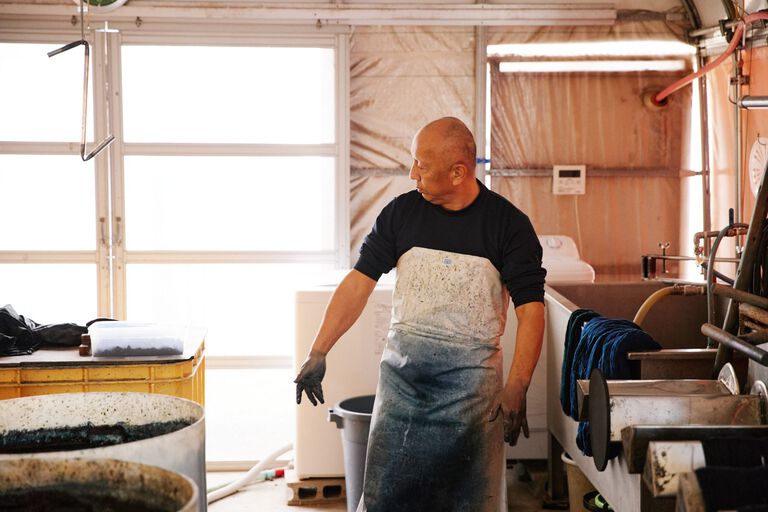
—Really? They don’t just turn blue naturally?
Okamoto: That’s right. Essentially, the aizome dyeing method uses lye made from fermenting natural leaves, and if that solution dries on the yarn without being washed off, it turns brown—like the color of dark tea. Once it turns that color, nothing will remove it.
—That’s quite a significant difference from just that step.
Okamoto: Yes. Basically, traditional aizome dyeing isn’t blue itself. The liquid is kind of brownish and turns blue through oxidation when exposed to air.
—So when you were washing the kase earlier, you were washing out the lye? Okamoto: Yes, and when it dries, the color becomes one shade lighter. And we just keep repeating that process.
—Is aizome-dyed denim fundamentally different from regular denim?
Okamoto: They’re completely different. It’s an entirely different product from denim made with synthetic indigo. Synthetic indigo jeans show distinct wear patterns over time, while jeans made from the aizome dyeing method rarely do. Unlike rope-dyed indigo, aizome dyeing is done by hand, sometimes dozens of times, so the color penetrates to the core of the yarn, making it more color-fast. On the other hand, it is more reactive to sunlight and ultraviolet rays, so the entire fabric gets “burned” when worn. That’s why we don’t call the aging process of aizome-dyed denim “fading,” but rather “burning.”
—What color do things made from the aizome dyeing method turn when burned by ultraviolet light?
Okamoto: It’s hard to describe in words, but to give you an idea, think of old fabric. Do you know what I mean by old fabric?
—Like the material used in noragi jackets (traditional Japanese work clothes)?
Okamoto: Yes, exactly. Many noragi jackets were made by aizome dyeing, and they change to a sort of greenish color, or a brownish-green. A characteristic of aizome dyeing compared to conventional indigo dyeing (which dyes thoroughly in one go) is that it can produce light and medium colors. But since MOMOTARO JEANS is committed to “特濃-TOKUNO BLUE,” the difference between it and indigo dyeing might not be immediately apparent when the item is new. Still, the color tone is different, and they’re definitely distinct products.

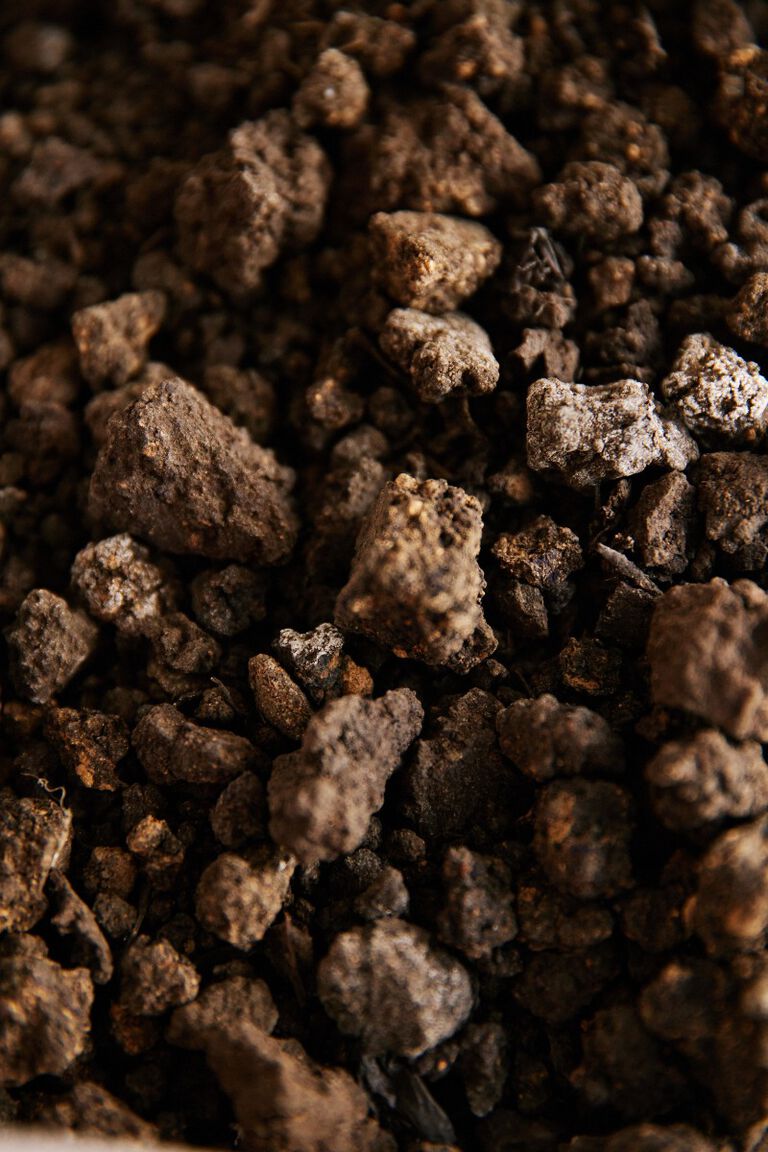
—So the aizome dyeing process causes burning, which drastically changes its appearance. And it also fades as you wash it, right?
Okamoto: No, since aizome dyeing penetrates to the core of the yarn, the dye hardly comes off when washed. However, no matter how tokuno (concentrated) we make it, if we concentrate it too much it becomes a purplish-red. MOMOTARO JEANS dyes at the very edge of this threshold. Personally, I also like fabrics with lighter and medium kase unevenness, which is characteristic of aizome dyeing.
Every Day is the Same, Every Day is Different
—How did you enter the world of aizome dyeing to begin with?
Okamoto: Originally, Hisao Manabe, the former president who founded MOMOTARO JEANS, was doing it, and I joined him as a machinery specialist. But as I watched techniques like cutting boards, sandwiching fabric between them to create patterns, and other dyeing methods up close, I started to find it more interesting. I’ve always liked crafting, so I asked Manabe if I could do it too. I said, "I'm just a rookie, so you can pay me whatever." (laughs)
—So that's how it began!
Okamoto: After that, I worked on MOMOTARO JEANS' denim, but manufacturers outside the company also started asking me to dye things for them, so I began dyeing those as well. One memorable project was dyeing coral. Since it has a high calcium content, it took the blue surprisingly well.
—That coral probably never imagined it would turn blue while it was alive.
Okamoto: (Laughs) Probably not. Driftwood also looks beautiful when dyed through the aizome method. I've been doing it for 23 years now, but there are still many things I don’t know about it.
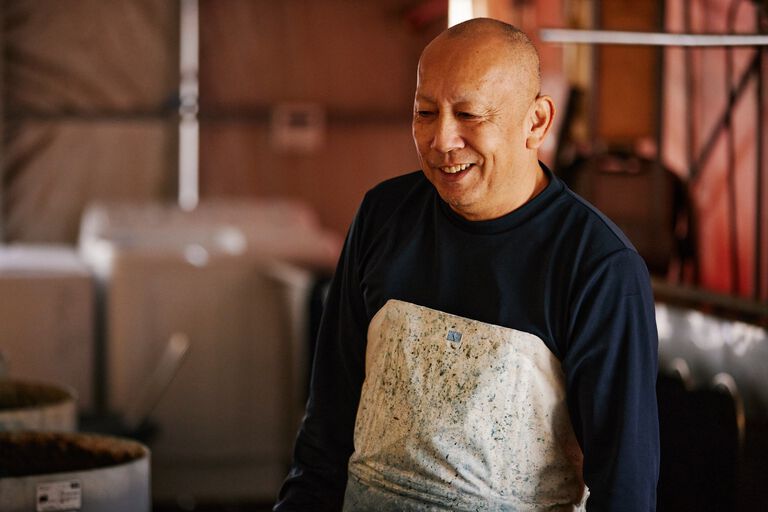
—Wow, even after all this time, you still haven't mastered everything. What parts are particularly challenging?
Okamoto: The biggest challenge is managing the dye solution. I can generally achieve the dyeing results I want. But that took about 10 years to get right. For example, when preparing the dye vat, fermentation usually starts in about a week to 10 days during summer, but sometimes it inexplicably never starts. The dye solution I'm using now is fresh, but it was prepared around November 15th last year and only became usable for dyeing after the new year.
—I didn't realize the pre-dyeing stage takes so much time.
Okamoto: I can tell the fermentation level by stirring it, but because it's a natural material, it changes every day. That's what makes it difficult. And since it needs daily attention, there are no days off. No holidays during Obon or New Year's—I have to come in and stir it every day. At the end of last year, I was so sick I could barely get out of bed, but I still had to come in every day to stir the indigo vats.
—That's what you meant by “I have to do it daily...” And you don't even know when fermentation will start and when you can begin dyeing…that sounds hard.
Okamoto: Yes. It's tough, but if I neglect it, the indigo will die. I can't just say, "I'll skip today." I have to stir it daily and add oxygen. As I do this, it begins fermenting, turns blue when exposed to air, and solidifies.
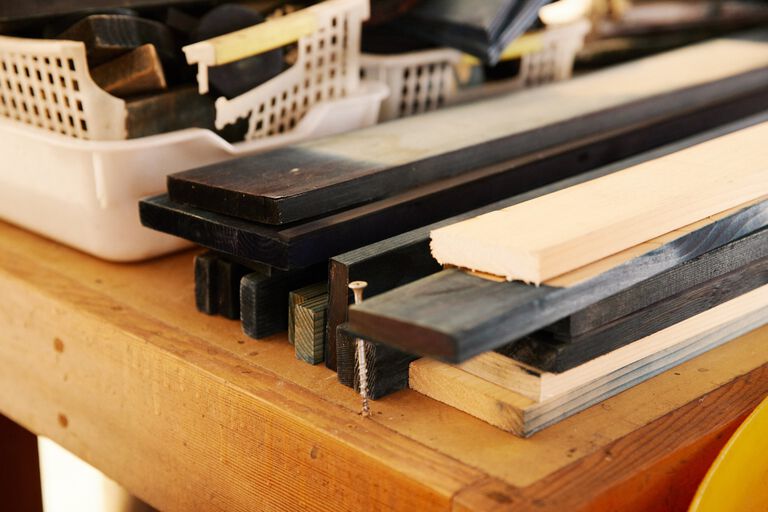
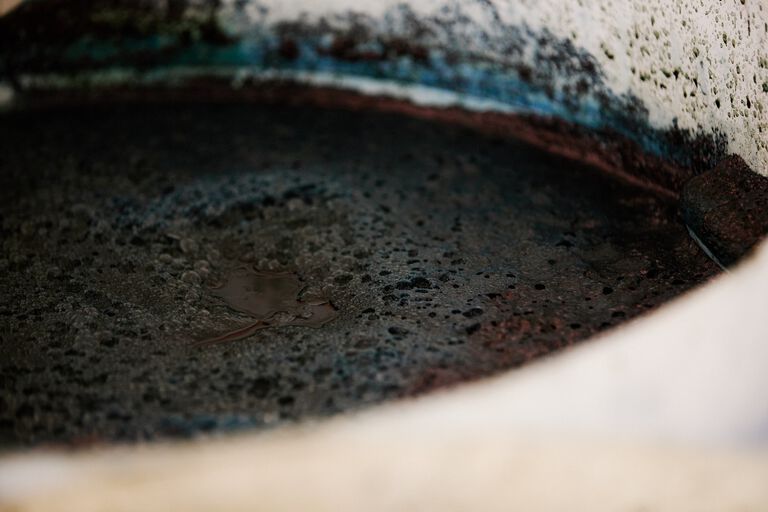
—I've been fascinated watching this foam with its unusual texture.
Okamoto: This is called “ai no hana” (indigo flower). There's a material called sukumo, which doesn't dissolve in regular water, so we knead it in boiling alkaline water with a pH of 11 to 13. We filter hot water through ash from burned wood to raise the pH. The process of preparing indigo is called “ai-date” (indigo vat preparation), and we repeat this while waiting for fermentation to occur. But sukumo itself is becoming increasingly difficult to obtain.
—The raw material itself?
Okamoto: The number of farmers growing indigo leaves, the raw material for sukumo, is decreasing, so the supply is limited. The people who make sukumo are called “aishi” (indigo masters), and quantities are already limited at their level. So if we say, "Please give us 5 bales of sukumo this year!" they'll say, "That's impossible..."
—Is making sukumo itself also labor-intensive?
Okamoto: Sukumo is made by piling dried ai leaves in a large room, covering them with straw mats, and spraying them with water. Then about every 7 to 10 days, the mats are removed and everything is stirred... this continues for about 100 days. It's essentially rotting the leaves into a material similar to compost. You can dye things only using the leaves, but the color doesn't come out as strongly. When you make sukumo, it can be preserved for years and produces a rich color.
An Endless Path: The World of Artisans
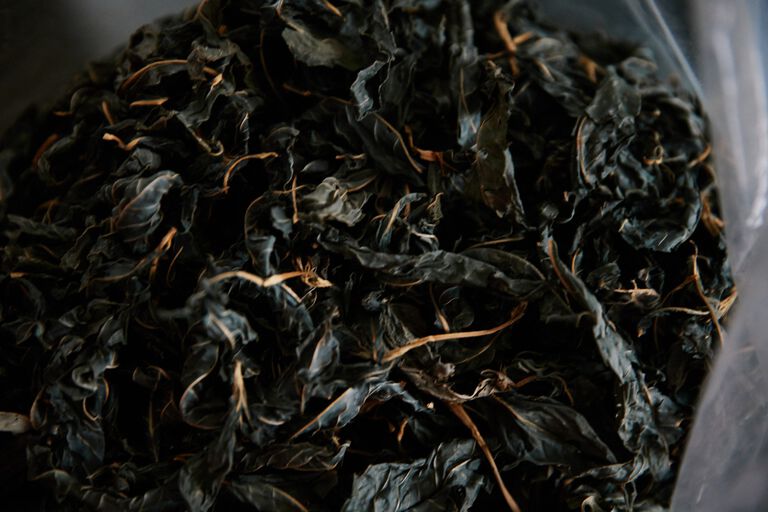
—So many people are involved in creating aizome-dyed products.
Okamoto: Yes, and that's where the value of aizome dyeing lies, I think. It takes about 6 kase to make one pair of jeans, and you need about 76 kase to weave one tan (a traditional Japanese unit of fabric measurement). That's why it takes time and costs more than synthetic indigo. You might see products advertised as "aizome-dyed denim" at surprisingly low prices, but many aren't genuine aizome-dyed products. An ordinary person might not notice, but we can immediately tell by the color difference.
—It requires tremendous patience to spend decades mastering the technique and then put so much effort into each dyeing process...
Okamoto: That's why young people sometimes come wanting to be artisans, but they don't last. I think they have an oversimplified idea of what being an artisan means. For us, the path of an artisan meant being severely scolded when young, and only being able to say "yes" to what the master said. It's so demanding that only those who can endure that kind of training can continue. It's a constant cycle of dyeing and failing, and one can only become an artisan by accumulating that experience. From a young age, I hated being employed by others and asking others for help, so I would research things myself and try them out, working three or four times harder than those around me. When I failed, that's when I would finally ask Manabe. He would say, "Why don't you try this?" but even his answer probably wasn't 100% correct. There is no textbook to this craft.
—And the current state of that trial and error is what you described about fermentation earlier.
Okamoto: Yes. As it gets hotter, fermentation progresses too quickly and the liquid temperature rises to around 30 degrees Celsius. At that point, the yeast quickly succumbs to bacteria, and the dyable amount decreases. So I stir it to prevent bacteria from taking over and sometimes sprinkle lime to disinfect it. But I can't add too much, or it will kill the indigo yeast as well—it's a delicate balance. You can only learn this through experience. Honestly, just looking at the work itself, there's not much appeal (wry smile).

—Yet you've continued for over 20 years. Why is that?
Okamoto: I love it, really. This work of dyeing. When I create something with the colors and patterns that I envisioned, it makes me happy. When I entered this field, MOMOTARO JEANS was probably the only company making denim with the aizome dyeing technique. So I keep dyeing these kase every day, hoping they'll end up in the hands of people who appreciate and care about aizome dyeing even more than denim enthusiasts.
—It truly is a masterful craft, isn't it? This aizome-dyed denim.
Okamoto: I don't really think of myself as a master artisan (laughs). I'm still a rookie. I think there's probably no such thing as complete mastery in aizome dyeing.
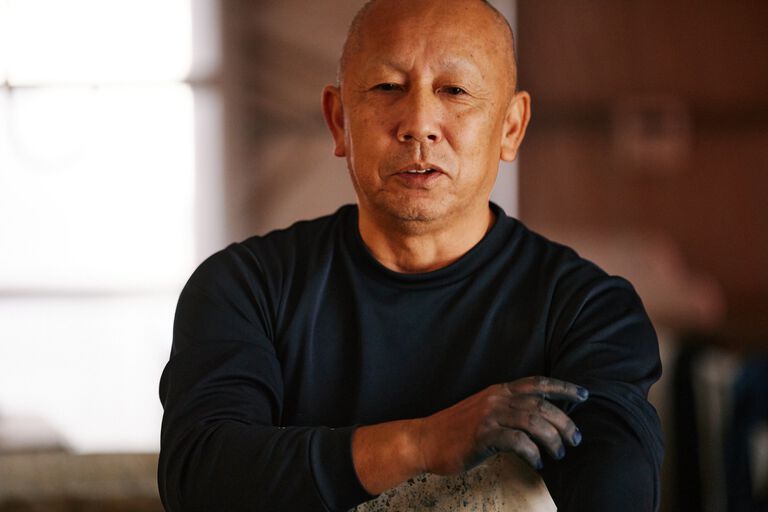
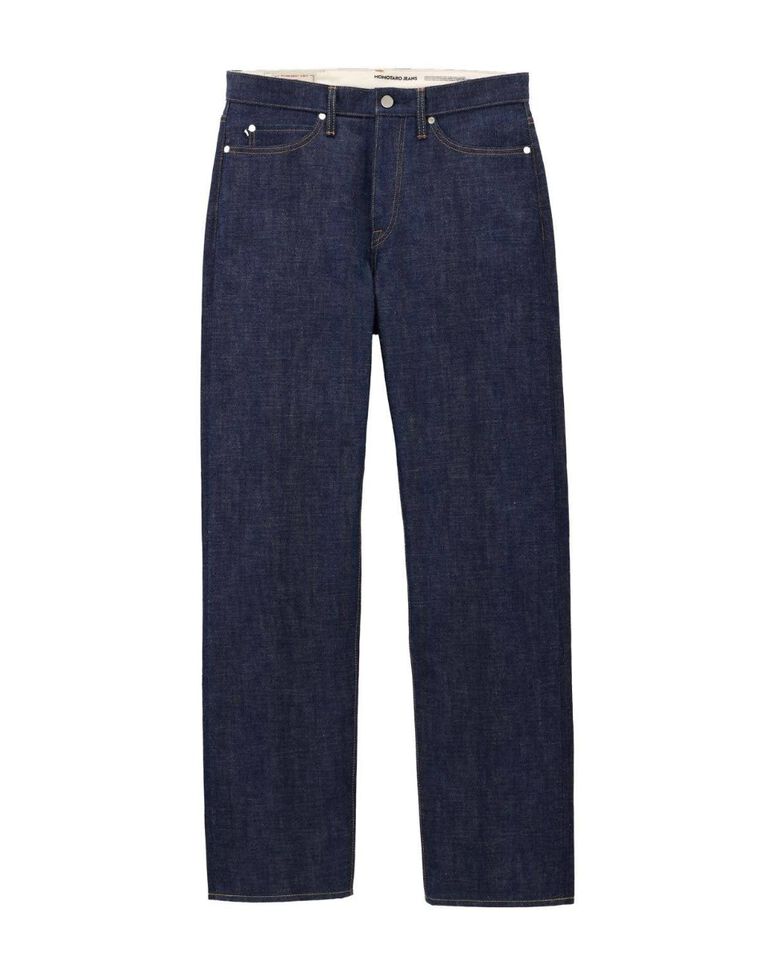
#100 NATURAL INDIGO STRAIGHT 12.2oz
Five-pocket jeans made from 12.2oz denim fabric using warp threads hand-dyed by Mr. Okamoto made by the traditional aizome indigo dyeing method. The waistband and pocket lining feature cotton-silk fabric for a pleasant feel against the skin. The waistband seam features Sanada-himo, a traditional craft from Kojima that developed as decorative cord for Japanese sword tassels and paulownia boxes. The denim fabric is, of course, woven on vintage shuttle looms, and everything from the blue selvedge edge to the sashiko patch on the back waistband is dyed using the traditional aizome indigo dyeing method. Only available in a straight silhouette that pairs well with a wide range of styles.
Yoshiharu Okamoto
Born in 1969. Raised in Kojima, Okayama Prefecture. He joined Japan Blue, the company behind MOMOTARO JEANS, as a machine technician in 2001, and later pursued aizome dyeing as described in this article.